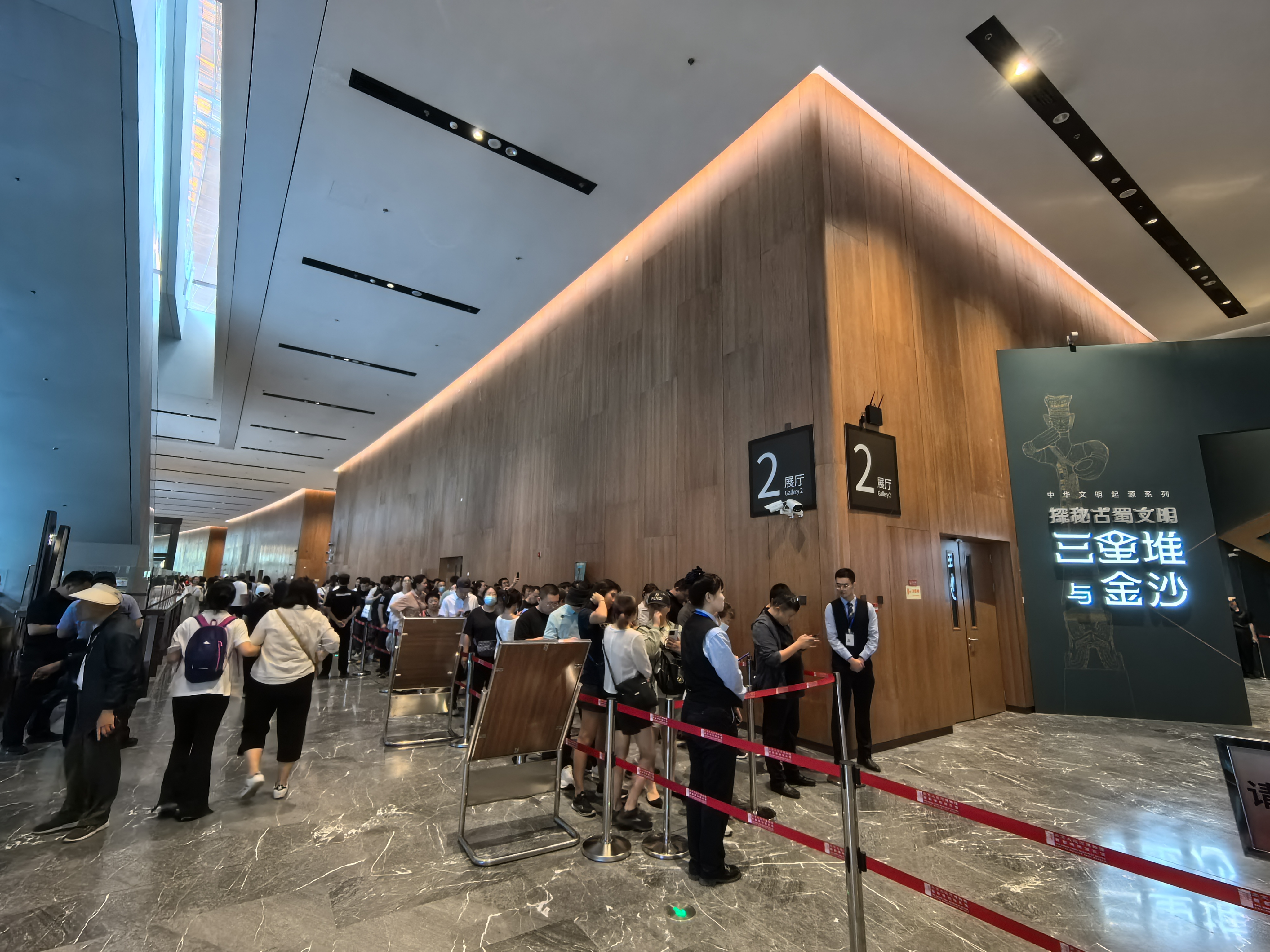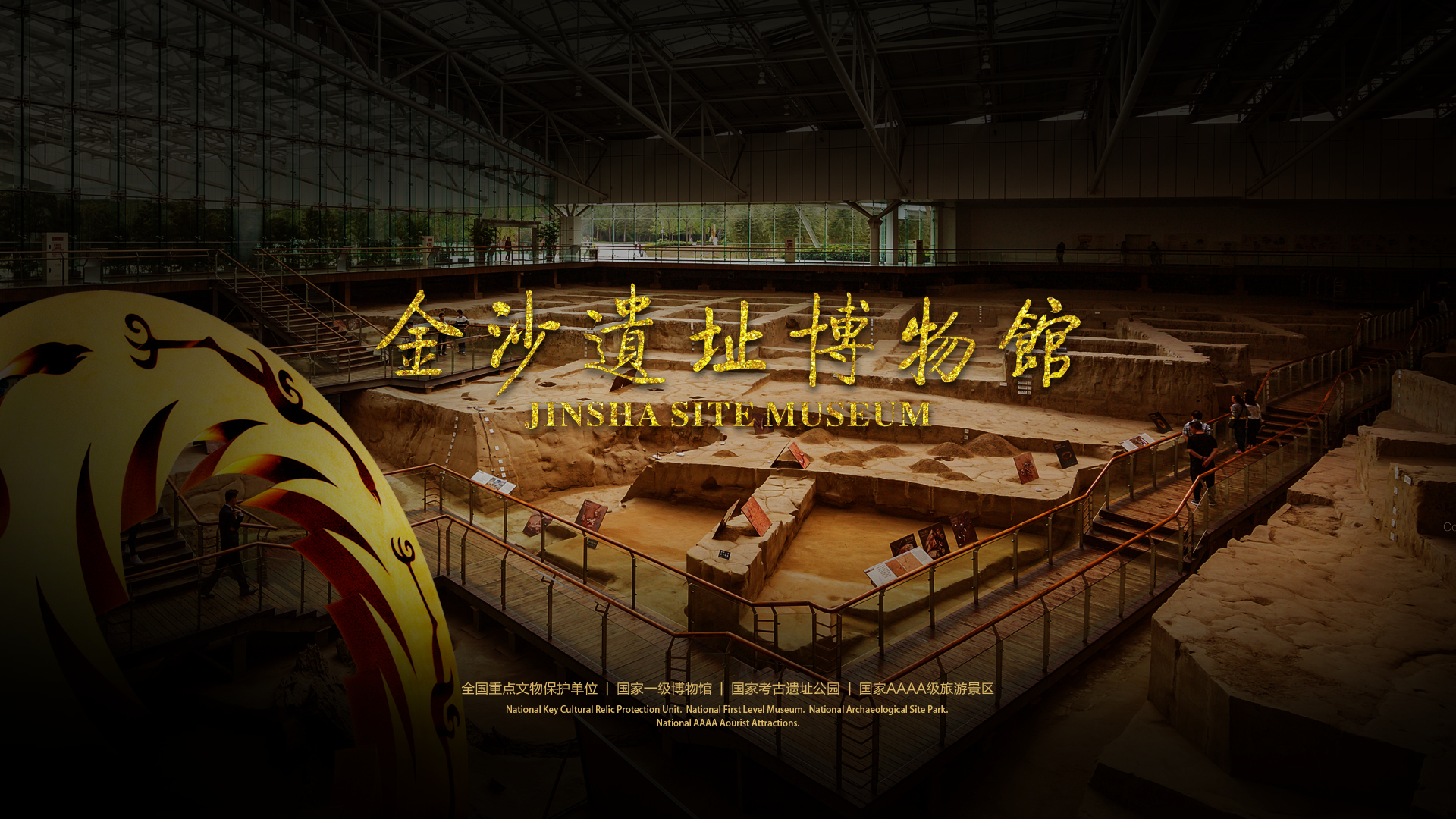“Explore Ancient Shu Civilization—SanXingDui and JinSha” exhibition carried out at Beijing Grand Canal Museum
Release Time: 2024-06-27
On June 27th, “Explore Ancient Shu Civilization—SanXingDui and JinSha” exhibition was carried out at Beijing Grand Canal Museum (East Hall of the Capital Museum), and the exhibition will last until October 10. As the opening exhibition of the Capital Museum’s “Origins of Chinese Civilization” series of exhibitions, a total of 265 pieces (sets) of Ancient Shu Civilization related cultural relics from Chengdu JinSha Site Museum, Sichuan GuangHan SanXingDui Museum, Sichuan Provincial Cultural Relics and Archaeology Research Institute, and Capital Museum and other units were exhibited. In this exhibition, the audience will appreciate 52 precious collections of the Jinsha Site Museum, including 50 precious cultural relics above level 3 (including 21 level one cultural relics) and 2 3D printed artworks. The curator of Chengdu Jinsha Site Museum—Zhu Zhangyi representing 12 exhibition participation units attended the exhibition and made a welcome speech._1724636259022.jpg)
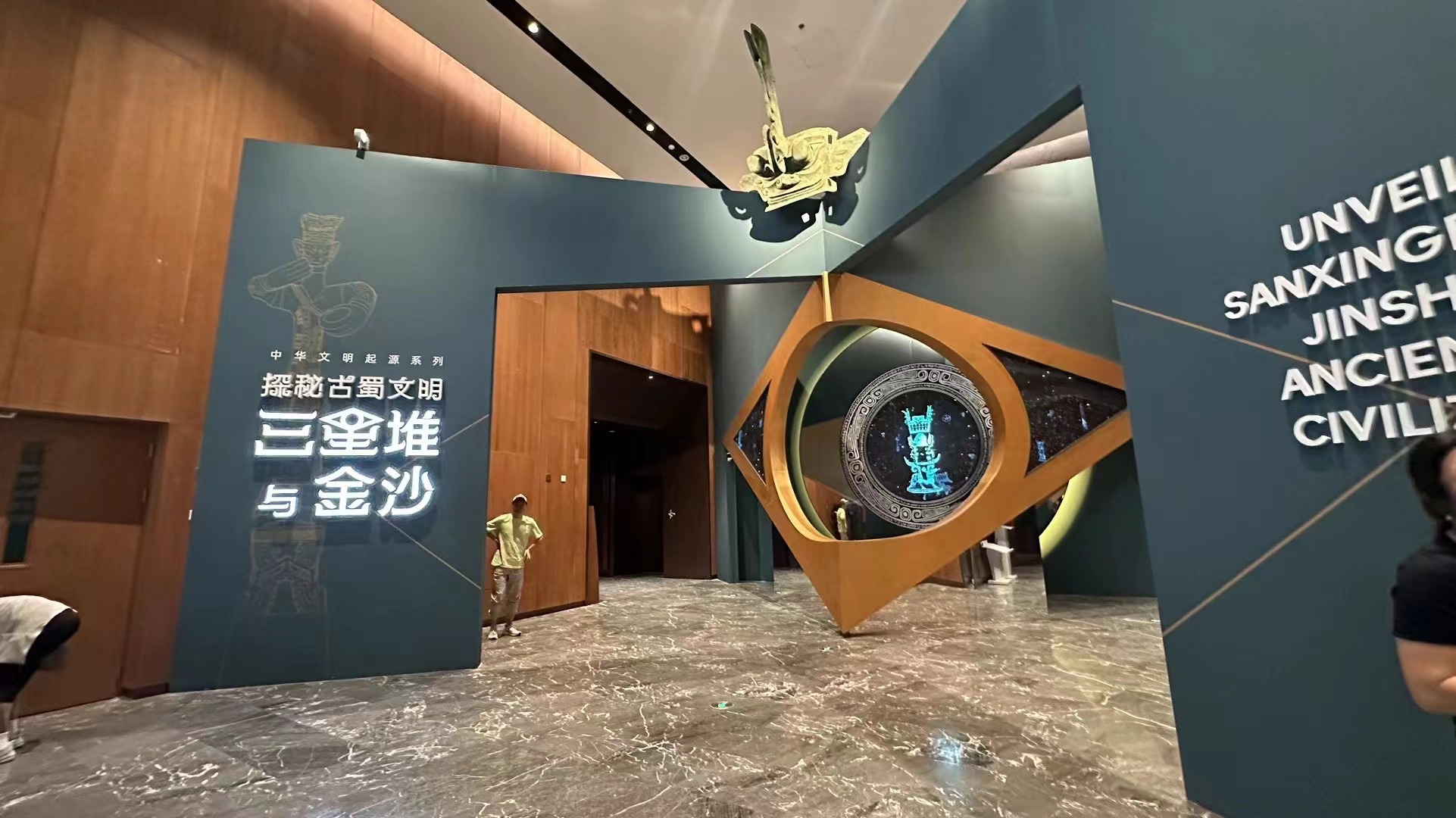
Three Chapters: Unveil the Mystery of Ancient Shu Civilization
This exhibition is guided by the State Administration of Cultural Heritage and the Publicity Department of the Beijing Municipal Committee of the Communist Party of China, hosted by Beijing Municipal Cultural Heritage Bureau and the Sichuan Provincial Cultural Heritage Bureau, and co-organized by the Capital Museum, Sichuan Provincial Cultural Relics and Archaeology Research Institute, Sichuan Guanghan Sanxingdui Museum and Jinsha Site Museum. Through the three chapters of “Discovering SanXingDui”, “Interpreting SanXingDui” and “Locating SanXingDui”, the audience will appreciate the archaeological discovery process of Sanxingdui and Jinsha Site, feel the wisdom and creativity of the ancient Shu people, and unveil the mystery of the ancient Shu civilization.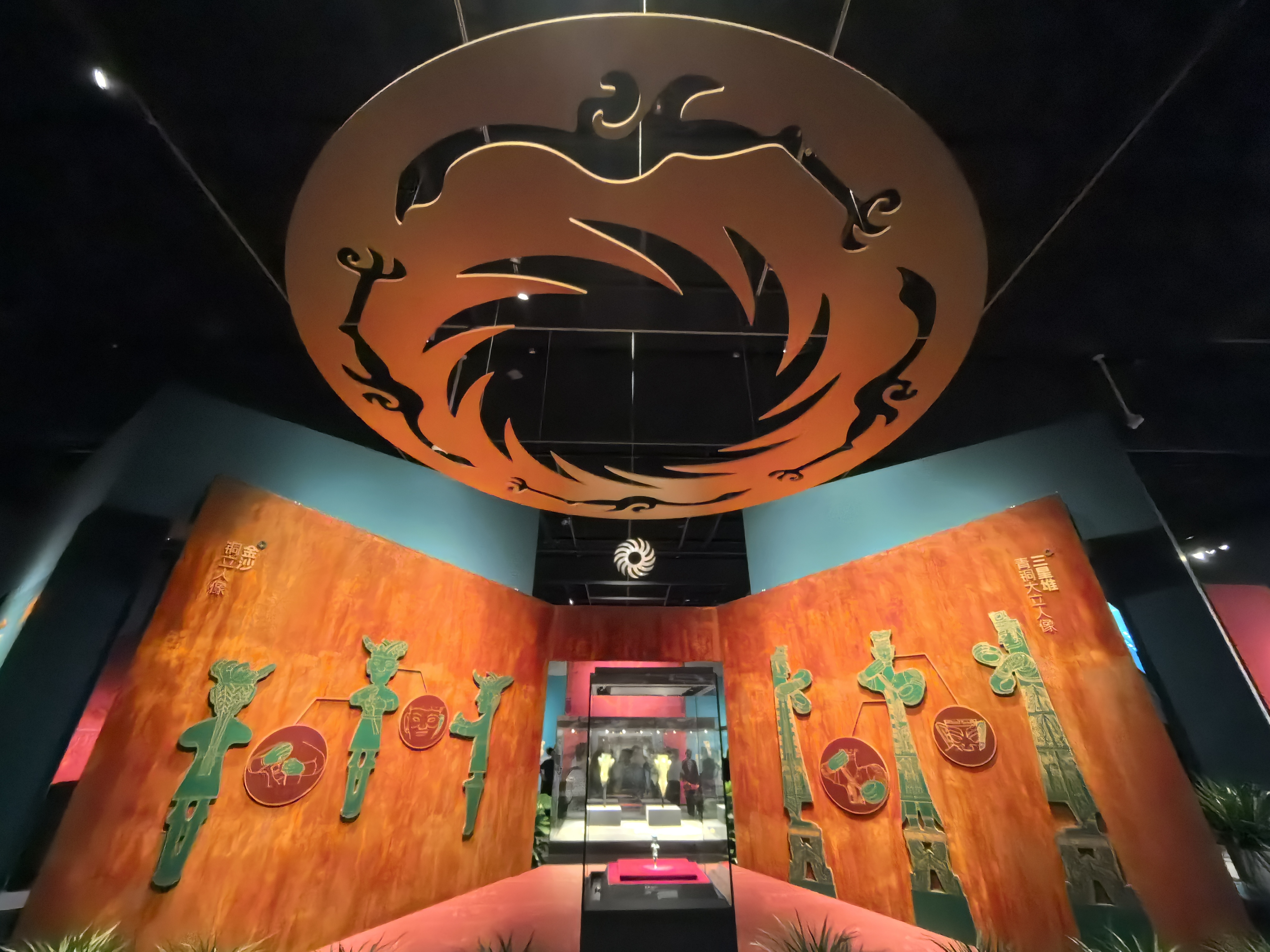
The Sichuan Basin has long been known as “The Land of Abundance”, and it has bred the mysterious and brilliant ancient Shu civilization. From the “awakening of the world” of SanXingDui No.1 and No.2 sacrificial pit in 1986, to the emergence of the Jinsha site in 2001, to the reopening of the excavation of the six sacrificial pits in SanXingDui in 2019, a large number of amazing archaeological discoveries have allowed us to witness the glorious history and outstanding achievements of the ancient Shu civilization again after thousands of years, and vividly feel the extraordinary creativity and imagination of the ancient Shu ancestors. As the two peaks of the development of Ancient Shu Civilization, SanXingDui and JinSha Culture are of the same origin, jointly outlining the magnificent picture of the development and evolution of ancient Shu civilization, enriching the profound connotation of Chinese civilization, and witnessing the early exchanges and integration of civilizations in various regions of China. It is a typical example of the diversity, inclusiveness, innovation, and creation of Chinese civilization, and has left a remarkable and colorful mark in the history of world bronze civilization.
Zhu Zhangyi, Curator of the Chengdu Jinsha Site Museum, said that he hoped that this cultural feast across time and space would be an opportunity to further promote the in-depth cooperation between Beijing and Sichuan in the protection and inheritance of cultural heritage. This will enable us to display and spread more value symbols carrying Chinese culture and Chinese spirit well and tell good China stories!
Special,unique"Snake-pattern Gold Foil"left chengdu for the first time for exhibit
This time’s “Explore Ancient Shu Civilization—SanXingDui and JinSha” exhibit, JinSha Site Museum’s exhibit items are mainly presented in the third unit of exhibition “Locating SanXingDui”. As another peak of the development of the ancient Shu civilization after Sanxingdui, the most critical value of the Jinsha Site is that it has solved the mystery of the whereabouts of Sanxingdui, found the historical roots for Chengdu, and improved the cultural sequence of Sichuan’s pre-Qin archaeology.
In the JinSha Exhibition of Culture Relics, “Snake Pattern Rounded Trapezoid Gold Foil” is the first time to be exhibited outside Chengdu. The overall shape of this gold foil is a rounded trapezoid, and the snake pattern is coiled from the inside to the outside. The unique shape only shows in Ancient Shu regions, shows the vital purpose of snake in Ancient Shu sacrifice activities. In addition to snake-shaped cultural relics, the exhibition also selects Bronze Bird, Golden Bird Fish Stripe, Bronze Ox Heads, Bronze Dragon Heads, and other cultural relics unearthed from JinSha Site Museum. In particular, the stone tiger and stone kneeling humans’ combination, which presented a “tiger eating people” shape when unearthed, rarely appeared, showing the animal worship thought of the ancient Shu Jinsha ancestor and their unique sacrificial concept.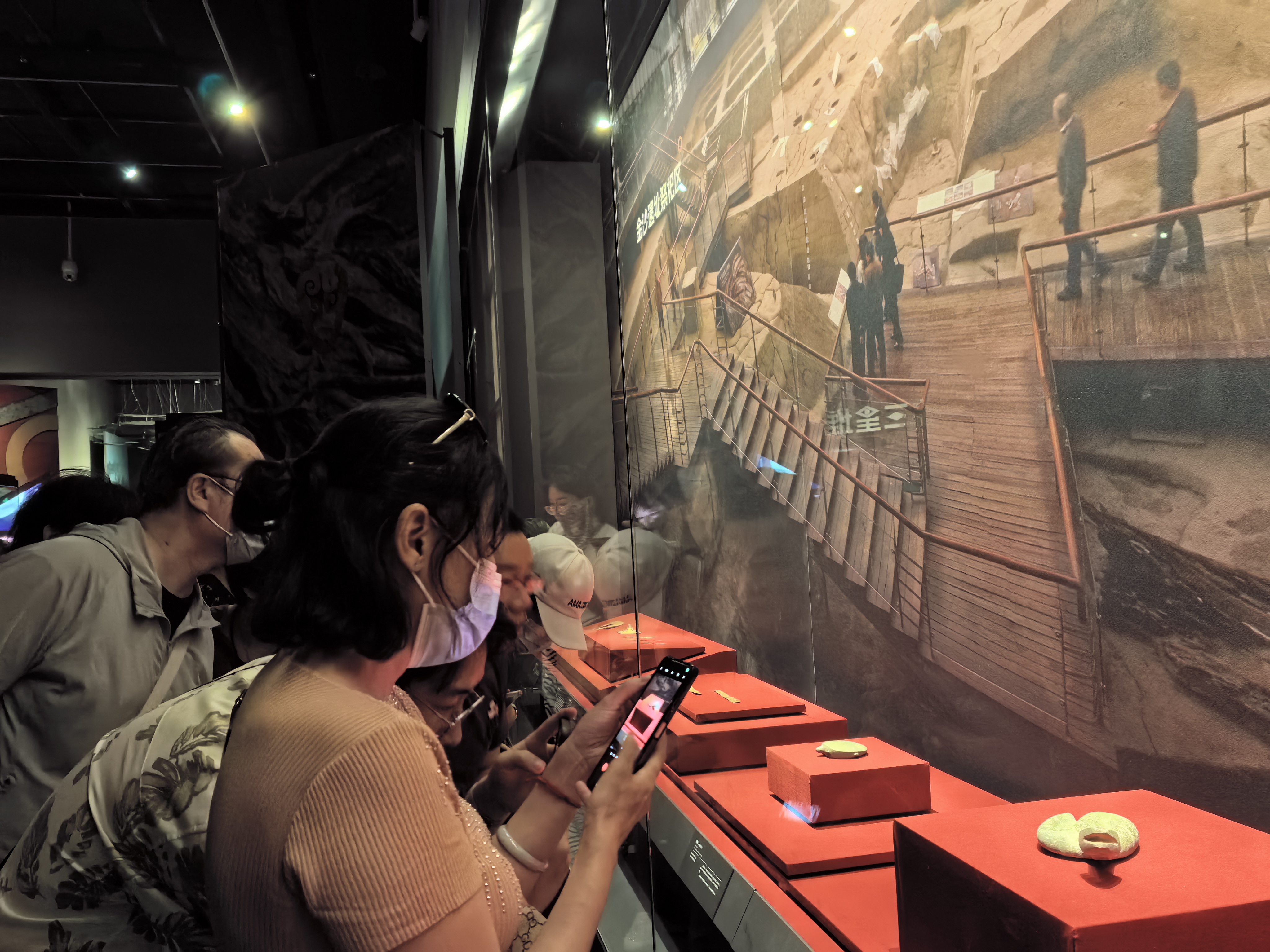
In addition, Jinsha jade is also an important part of the exhibits. More than 3,000 jades were unearthed from the Jinsha site, making it one of the sites in China with the largest number and rich variety of jades unearthed from the Xia and Shang dynasties. In this exhibition, two-color Collared Bi with different colors on the front and back, The Four-Node Jade Cong that integrates the jade making technology of ancient Shu, Jade God-man Face whose identity is mysterious, and small jade Zhang whose shape originated from the Yellow River Basin and was integrated and innovated by the ancient Shu people are exhibited on the same stage, allowing the audience to marvel at the mysterious cultural appearance of ancient Shu and deeply feel its cultural characteristics of tolerance, openness and innovation.
At 2:00 pm on the opening day of the exhibition, Yu Xin, deputy director of the Public Service and Social Education Department of Chengdu Jinsha Site Museum, also participated in the opening museum live broadcast event launched by Beijing Radio And Television Stations with experts from Sanxingdui Museum in Guanghan, Sichuan and Capital Museum, leading the audience to explore the archaeological discovery process of Sanxingdui and Jinsha Site through the lens, feel the unique charm and artistic achievements of Sanxingdui and Jinsha culture, and gradually unveil the mysterious veil of the origin of Chinese civilization.
